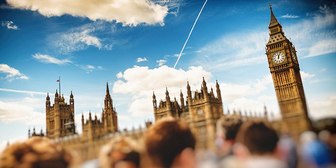After all the adverts, promotions and hype, Christmas Day is almost here. Soon, shop staff can get ready to have a well-earned one day break before heading back to work on Boxing Day.
The game has changed for retailers in the past decade. The twin effects of the financial crisis squeezing disposable cash and the coming of age of online have made high street and retail parks a battlefield for shops desperately seeking footfall.
Each year consumers’ shopping behaviour at Christmas evolves and retailers have to adapt to keep up. A good case in point is the Black Friday phenomenon. Imported from the United States, it made a notable impact in the UK last year as shops stacked them high and sold them cheap, giving consumers a mid-winter lucky dip.
This year things were different. Put off by images of pitched battles in supermarket aisles, more consumers stayed at home and shopped online. But consumer behaviour has also changed in a different way that could have a significant impact on the high street next year.
The initial findings of our Black Friday study show that shoppers approached the day more strategically this year. Instead of buying treats for themselves increasing numbers used it to get Christmas gifts for others, although this activity was only seen online.
The proportion who bought Christmas presents online on Black Friday doubled year on year in percentage terms from 7% in 2014 to 14% in 2015, whereas those buying festive gifts on Black Friday in-store dropped slightly from 5% to 4%.

There is no reason to believe that this trend will not continue at Black Friday 2016. If a large proportion of consumers have bought their presents at a knock down price by the end of November the impact of retailers – especially those on the high street – would be significant.
The challenge they face next year is to find a way of turning Black Friday from a gift that takes from retailers into one that gives to them.
More information on YouGov Consumer research
Image from PA









